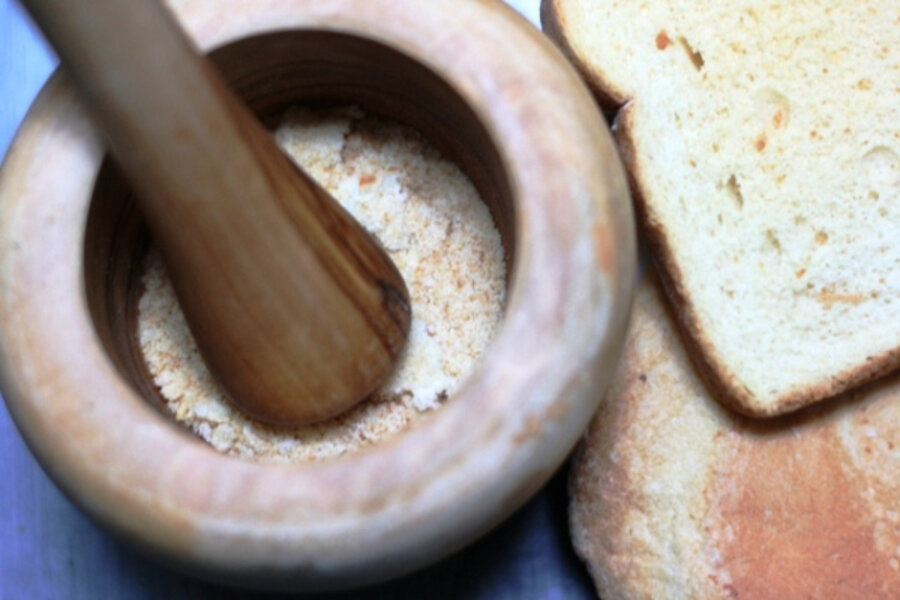How to make breadcrumbs
Loading...
When I bake banana bread, I’m so eager to slice the end off and chomp down that barely five minutes passes from oven to mouth. And I have my red, sore fingers to prove it. Sweet and chewy on one side, and thick and crusty on the other, the ends are definitely prime real estate on a freshly-baked loaf of banana bread. Plus, with only two of them, they are all the more alluring!
But somehow the same doesn’t hold true for store-bought bread. I can never bring myself to eat spongy Oroweat ends or even the heel of a freshly-baked baguette (they scrape the roof of my mouth). And it’s not that I’m averse to crusts either. I eat them, especially since I don’t condone my toddler not eating them. I usually end up throwing the ends out which makes my conscience prickle with guilt. (Darn those starving African children.)
Well, my husband came up with one solution: strategically face the brown ends inward when making grilled cheese sandwiches. Brilliant no? I’ll happily eat it because I can’t t tell where the ends are! But grilled cheese sandwiches are my husband’s forte and he – ahem – doesn’t cook all that much.
Recently, I was struck by a memory. I recalled trays of stale bread, including the ends, left out in the sun to dry. No, they weren’t meant for the birds. They were destined to become breadcrumbs. At that time and place, you couldn’t buy breadcrumbs at the store and my mum made her own to coat her risoles and kroket. Once the bread slices were sufficiently dry, she would break them up and pound them in her giant stone mortar until they turned to a fine, crumbly dust.
Now this is all very practical and possible when you live one degree north of the equator. Not so in Seattle where the sun peeks out only 58 days a year.
My solution? Dry them out in the oven. I used Franz’s “Milk & Honey” bread which has a light, delicate crumb. I was hoping it would turn out like panko but no such luck. However, as far as bread crumbs go, they were great! And you get none of the unpronouceables, high fructose corn syrup, soy, dairy, goodness-knows what else that shouldn’t be in bread, that they put in in a can of store-bought breadcrumbs.
How to make homemade breadcrumbs
Start collecting those ends! I store them in the fridge or freezer until I have a good number of slices. Use any type of leftover or stale bread – baguettes, ciabatta, homemade. Different types of bread will give a different crumb so go ahead and experiment. I haven’t tried whole wheat yet so I”m not sure what the texture would be like. Perhaps you could report back? If you’d like, add some dried herbs – oregano, basil, tarragon. Store the breadcrumbs in an airtight container for up to 2 weeks in the refrigerator.
Time: 45 minutes (5 minutes active)
Arrange a rack in the middle of your oven. Preheat it to 250 degrees F.
Arrange your bread slices on a cookie sheet and place it on the middle rack.
Bake for 30 to 35 minutes, or until they are dry and brittle, flipping them halfway.
When they are done, pound them in a mortar or whizz them in a food processor until no big crumbs are left and/or they are the texture you want. I prefer using a mortar and pestle because I have better control of how fine the breadcrumbs turn out.






